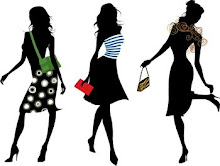The seasonal change cues fashion media editors to present the public with “must-have” and “no-no” listings, which, no matter how distinctive or careful we might think we are, finely compel us to think again the stock in our private wardrobes.
The old saying, “catch them when they are young” can be applied to fashion education. For example, when experts visit fashion colleges and advise students on the latest European trends – as if these are the unassailably essential forms of good design and as such, critical to design success – are we not diluting their artistic resources?
In these times of financial tension and budget adjustments, does “fitting in” with rapidly changing fashion cycles not pose challenges to designers and customers alike? Are we prisoners of fashion dictates, or could we consider co-creating new looks with minimal expense? How can local fashion designers sustain themselves by working around and within global and local market forces?
By means of strong marketing, our individual uniqueness can become effaced by homogenized clothing, a veneer that suggests we are part of a familiar whole. Trend forecasters, retailers and brand conglomerates launching new styles, fabrics, cuts and colors stoke the coals of peer pressure that conditions us to be seen in the latest ranges. As social beings, we are construed as a collective commodity traveling in a continuum of design renovation that is dictated by a few but embraced by the masses, often with little thought to suitability or personal imagination.
Being seen in the right brand wearing the “in” label of a particular designer neutralizes our individuality and leads to a contradiction of the purpose of fashion: individual style portraying human uniqueness; instead, we become fashion clones.
By conforming to seasonal trends, are we not impeding the innovation and growth of young fashion designers emerging in the market? There are a few designers who have created distinctive aesthetics and have steadily built a brand following. These looks are not confined to the examples seen on catwalks at Fashion Weeks events; idiosyncratic, semi-mass-produced, wearable garments are also available.













0 comments:
Post a Comment